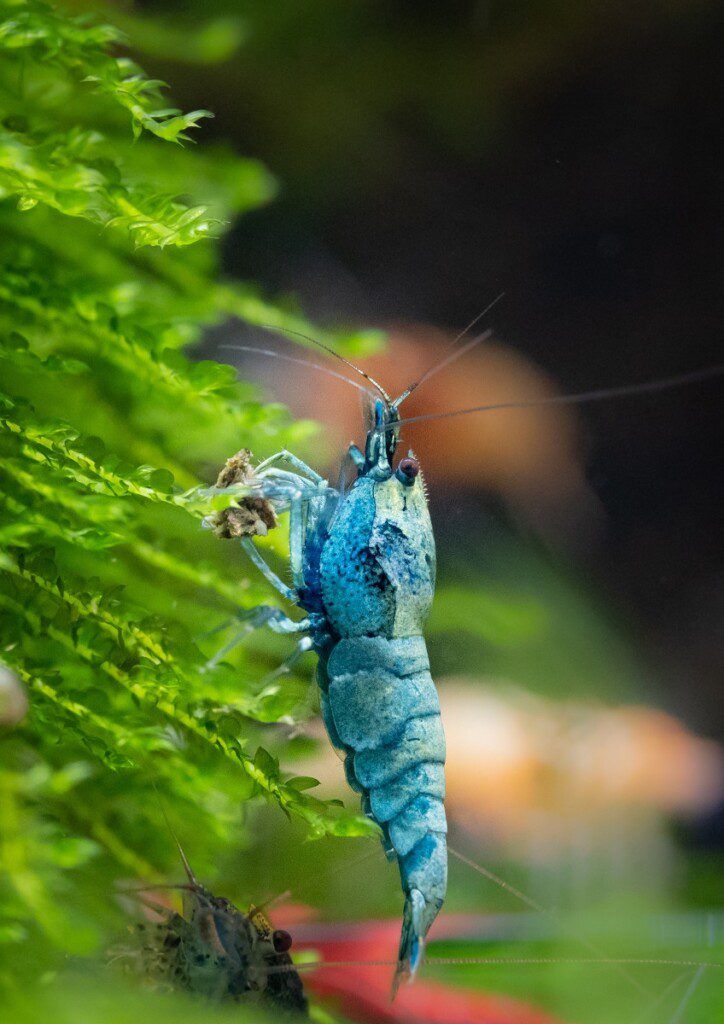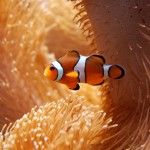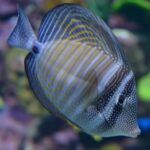As mentioned in our guide on the best aquarium plants, most aquarists are aware of the presence of various types of aquatic mosses that can be grown in our fish tanks. The most common moss is Java moss, which is easy to grow and widely known. However, the world of moss doesn’t end there!
Java moss has a rather sprawly and (depending on the lighting levels) spindly growth pattern. If you’re looking for a moss with better texture to spruce up your aquascape, you might prefer Vesicularia montagnei, better known as Christmas moss. The species is appreciated for its denser growth and named after its Christmas tree-shaped fronds.
| Name | Christmas moss, Xmas moss, Vesicularia montagnei |
| Care level | Moderate |
| Temperature | 68-82°F |
| pH | Highly adaptable |
| Position | Accent plant |
Christmas moss natural habitat
Scientifically known as Vesicularia montagnei, Christmas moss is a plant in the division Bryophyta, better known as the mosses.
Although Christmas moss is grown as an aquarium plant and does perfectly well submerged, it’s actually usually found above the surface in its natural habitat. Specifically, it usually grows on rocks along riverbanks and streams, receiving the water it needs from the spray and moist air.
In some habitats, Xmas moss can also be found forming dense mats that cover the forest floor. Its natural spread covers areas as far west as the Arab peninsula and as far east as Australia. In between, it can be found in warm, tropical countries areas India, Indonesia, the Philippines and more.
Christmas moss vs Java moss
As mentioned, the most common moss available in the aquarium hobby is Java moss, also known as Taxiphyllum barbieri (and sometimes wrongly as Vesicularia dubyana, which is actually the name for a slightly different species commonly known as Singapore moss). It’s probably the easiest moss to grow, but it’s not necessarily the best-looking species.
Both Christmas moss and Java moss are hanging moss, meaning their fronds naturally have a straight growth pattern. The difference is in the appearance of the fronds: Java moss looks more straight and spindly, while Christmas moss fronds start out wide and taper at the tip, giving that typical Xmas tree look.
Some of the other differences between Christmas moss vs Java moss include:
- Xmas moss has broad, short cells with thin walls. In Java moss, they’re long, narrow and thicker.
- Xmas moss appreciates warmer water. Java moss can be grown without a heater.
- Xmas moss needs more light to thrive than Java moss.
- Xmas moss tends to be a slower grower than Java moss.
- Xmas moss is more commonly used for moss walls and to cover objects than Java moss, which is often grown in a free-floating state.
What you do have to remember when buying any aquarium moss is that they’re very frequently mislabeled. This isn’t necessarily the aquarium store’s fault; the problem with mosses is that they grow differently in different conditions. Christmas moss maintained emersed (above the surface) under high light will look very different from Christmas moss grown submersed under low to medium light.
The best way to identify aquarium moss is to use a microscope. Since that’s unfortunately not an option for most of us, comparing photos will have to do.
Christmas moss planting
Christmas moss is a great option if you’re looking to add some extra texture to your aquascape. It’s quite versatile and can be planted in many different ways. You can opt to leave it free-floating to provide shelter for young fry, but the most decorative option is to attach the moss to walls or hardscape.
You can easily attach aquatic mosses to your desired surface using fishing line or super glue. Initial growth can be a little slow, but once the plant takes off it’ll quickly anchor itself and start sending out new fronds.
If you’re looking to create a moss wall or carpet, your best bet is to sandwich the moss between pieces of mesh and put it in place. The mesh will be visible at first, but it’ll quickly be taken over and look more natural.
Did you know? If you have a terrarium or vivarium rather than an aquarium, worry not. Christmas moss is still a great choice. If no water splashes on the moss, just make sure you spray it daily to keep it nice and moist.
Christmas moss care
Although it’s not the easiest aquatic moss to grow in your aquarium, you should still be able to have Christmas moss thrive just fine with the right care. The most important factor to keep in mind is light. As mentioned, unlike its cousin Java moss, this species doesn’t appreciate being grown in low-light set-ups.
Medium light levels will work for Xmas moss, but expect slower growth than if you’d be using brighter lamps. With higher amounts of light also comes a higher demand for Co2, which means having a Co2 system running is a big plus if you’d like to grow this moss.
Pruning is an important part of keeping any aquatic moss healthy. If left to grow untamed, Christmas moss will become too dense, causing the fronds that aren’t receiving fresh water anymore to eventually die off. This can result in the plant losing its anchoring to whatever surface it’s attached to, making for a messy look.
To prevent your Xmas moss from succumbing to rot from the inside, simply whip out the pruning scissors a few times a year to give the moss a good trim. Any pieces you remove can be re-attached in other places for an even lusher look to your aquarium.
Problems with Christmas moss
Growing live plants in your aquarium can be a struggle at times, and this is no different with Christmas moss. Although we wouldn’t consider it an overly challenging choice, there are still some common issues that might arise when trying to maintain this moss species.
Algae
The dense fronds of mosses like Xmas moss are unfortunately an algae magnet. An imbalance in your aquarium (excess nutrients, too little Co2, too much light) can quickly cause thread algae to nest itself in this greenery, with the growth pattern making it quite hard to remove without ruining the moss too.
Christmas moss turning brown
As we mentioned in the section on care, one cause of Christmas moss dying off can be a lack of pruning. This issue is easy to recognize, as the fronds will start turning brown from the inside out. Other causes can include a lack of nutrients, lack of water flow, overly warm water or sudden changes in water consistency (like right after buying the plant).
Identification
Aquatic mosses look different in varying conditions. This is no different for Christmas moss and its close cousin Java moss. As mentioned, Java moss is usually a bit more stringy, but in certain conditions the two can look so similar it’s very difficult to tell them apart.
Make sure you’re buying from a reputable store to avoid accidentally acquiring Java moss instead of Christmas moss!
An aquascape in your home?
Using plants like Christmas moss in your aquarium is the perfect way to bring a little bit of nature and greenery into your home. Unfortunately, these aquascapes do require patience, maintenance and plenty of specialist knowledge.
Want to enjoy your aquascape without any of the hassle? At FantaSEA Aquariums we get our hands wet so you don’t have to. Feel free to contact us here with your ideas!
Sources







